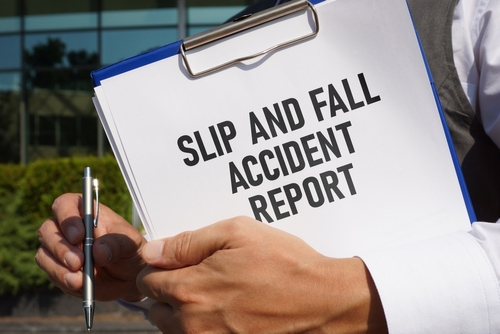Slip and fall accidents are among the most common types of personal injury cases in the United States. Whether you slipped on a wet floor at a grocery store or tripped over an uneven sidewalk, knowing how to file a personal injury claim can help you recover compensation for medical expenses, lost wages, and pain and suffering. This guide will walk you through the steps to take after a slip and fall accident to protect your rights and secure fair compensation.
What is a Slip and Fall Accident?
A slip and fall accident occurs when a person slips, trips, or falls due to a hazardous condition on someone else’s property. Property owners have a legal responsibility to maintain a safe environment for visitors. If they fail to address hazards and someone is injured as a result, they can be held liable under premises liability laws.
Common Causes of Slip and Fall Accidents
Several factors can contribute to slip and fall accidents, including:
1. Wet or Slippery Floors
- Spilled liquids
- Recently mopped floors without warning signs
- Rain or snow tracked indoors
2. Uneven Surfaces
- Cracked sidewalks
- Loose floorboards
- Torn carpeting
3. Poor Lighting
- Inadequate lighting in stairwells or hallways
- Burned-out light bulbs
4. Lack of Handrails
- Missing or broken handrails on stairs
- Unstable guardrails
5. Obstructed Walkways
- Clutter or debris
- Electrical cords across walking paths
Legal Basis for a Slip and Fall Claim
1. Premises Liability
Under premises liability law, property owners must maintain safe conditions on their property. If they fail to do so and a visitor is injured, the owner can be held legally responsible.
2. Duty of Care
Property owners owe a duty of care to visitors. They must:
- Inspect the property regularly
- Fix dangerous conditions
- Warn visitors about potential hazards
3. Negligence
To succeed in a slip and fall claim, you must prove that the property owner’s negligence caused your injuries.
Steps to Take Immediately After a Slip and Fall Accident
1. Seek Medical Attention
- Even if you feel fine, seek medical attention to rule out internal injuries.
- A medical report will serve as important evidence.
2. Report the Accident
- Report the accident to the property owner or manager.
- Request a written copy of the incident report.
3. Document the Scene
- Take pictures of the hazardous condition.
- Capture the exact location, lighting, and any warning signs.
4. Collect Witness Statements
- Get the names and contact information of any witnesses.
- Witness testimony can strengthen your claim.
5. Preserve Evidence
- Keep the clothes and shoes you were wearing at the time.
- Save any medical bills and receipts related to your injury.
How to File a Personal Injury Claim
1. Contact a Personal Injury Attorney
- An experienced attorney can evaluate your case and guide you through the claims process.
- Most personal injury attorneys work on a contingency fee basis.
2. File an Incident Report
- Provide the incident report to your attorney.
- Include details about the location, date, and cause of the accident.
3. Submit a Demand Letter
- Your attorney will draft a demand letter outlining your injuries and damages.
- The letter will request compensation from the property owner’s insurance.
4. Negotiate a Settlement
- The insurance company may offer a settlement.
- Your attorney will negotiate for a fair amount.
5. File a Lawsuit (if Necessary)
- If the insurance company refuses to settle, you may need to file a lawsuit.
- A court trial may be necessary to secure compensation.
Proving Liability in a Slip and Fall Case
To win a slip and fall case, you must prove:
✅ The property owner had a duty of care.
✅ The owner failed to maintain a safe environment.
✅ The hazardous condition directly caused your injuries.
✅ You suffered damages as a result.
Types of Compensation You Can Claim
You may be entitled to several forms of compensation, including:
- Medical Expenses – Doctor visits, surgeries, physical therapy
- Lost Wages – Income lost due to time off work
- Pain and Suffering – Emotional distress and reduced quality of life
- Punitive Damages – Additional damages to punish reckless behavior
Common Challenges in Slip and Fall Claims
1. Comparative Negligence
If you are partially at fault, your compensation may be reduced.
2. Lack of Evidence
Insufficient documentation can weaken your case.
3. Statute of Limitations
Most states have a time limit (typically two years) for filing personal injury claims.
When to Hire a Personal Injury Attorney
Hire an attorney if:
- Your injuries are severe.
- The property owner denies responsibility.
- The insurance company offers a low settlement.
An attorney can strengthen your case and increase the likelihood of securing fair compensation.
Conclusion
Filing a personal injury claim after a slip and fall accident requires careful documentation, timely reporting, and strong legal representation. By following the steps outlined in this guide, you can build a solid case and increase your chances of recovering the compensation you deserve. Consulting with a personal injury attorney will ensure your rights are protected throughout the process.
FAQs
1. How long do I have to file a slip and fall claim?
- The statute of limitations varies by state, but it’s usually between one to two years.
2. What if I was partially at fault for the accident?
- You may still receive compensation, but your settlement may be reduced based on your percentage of fault.
3. Can I file a claim without a lawyer?
- Yes, but having a lawyer increases your chances of securing a fair settlement.
4. What if the property owner denies responsibility?
- Your attorney can gather evidence and file a lawsuit to hold them accountable.

